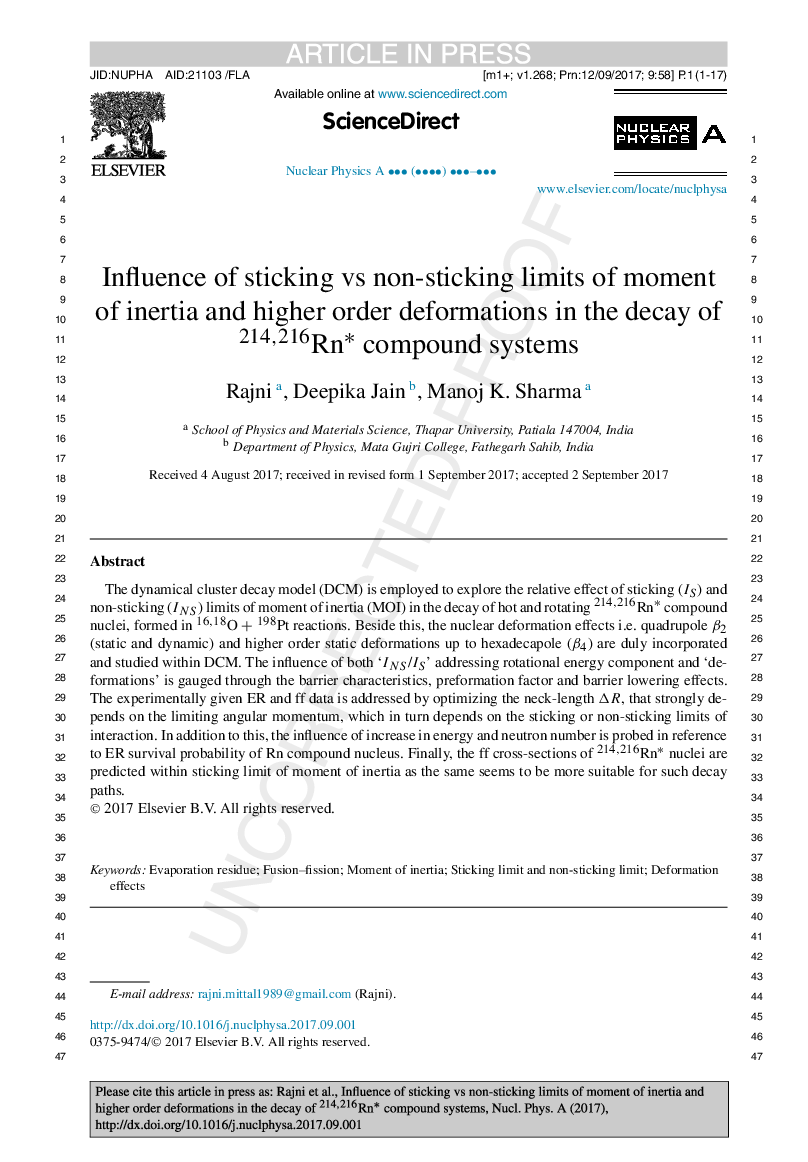| Article ID | Journal | Published Year | Pages | File Type |
|---|---|---|---|---|
| 5493895 | Nuclear Physics A | 2017 | 17 Pages |
Abstract
The dynamical cluster decay model (DCM) is employed to explore the relative effect of sticking (IS) and non-sticking (INS) limits of moment of inertia (MOI) in the decay of hot and rotating 214,216Rnâ compound nuclei, formed in 16,18O + 198Pt reactions. Beside this, the nuclear deformation effects i.e. quadrupole β2 (static and dynamic) and higher order static deformations up to hexadecapole (β4) are duly incorporated and studied within DCM. The influence of both 'INS/IS' addressing rotational energy component and 'deformations' is gauged through the barrier characteristics, preformation factor and barrier lowering effects. The experimentally given ER and ff data is addressed by optimizing the neck-length ÎR, that strongly depends on the limiting angular momentum, which in turn depends on the sticking or non-sticking limits of interaction. In addition to this, the influence of increase in energy and neutron number is probed in reference to ER survival probability of Rn compound nucleus. Finally, the ff cross-sections of 214,216Rnâ nuclei are predicted within sticking limit of moment of inertia as the same seems to be more suitable for such decay paths.
Related Topics
Physical Sciences and Engineering
Physics and Astronomy
Nuclear and High Energy Physics
Authors
Rajni Mittal, Deepika Jain, Manoj K. Sharma,
